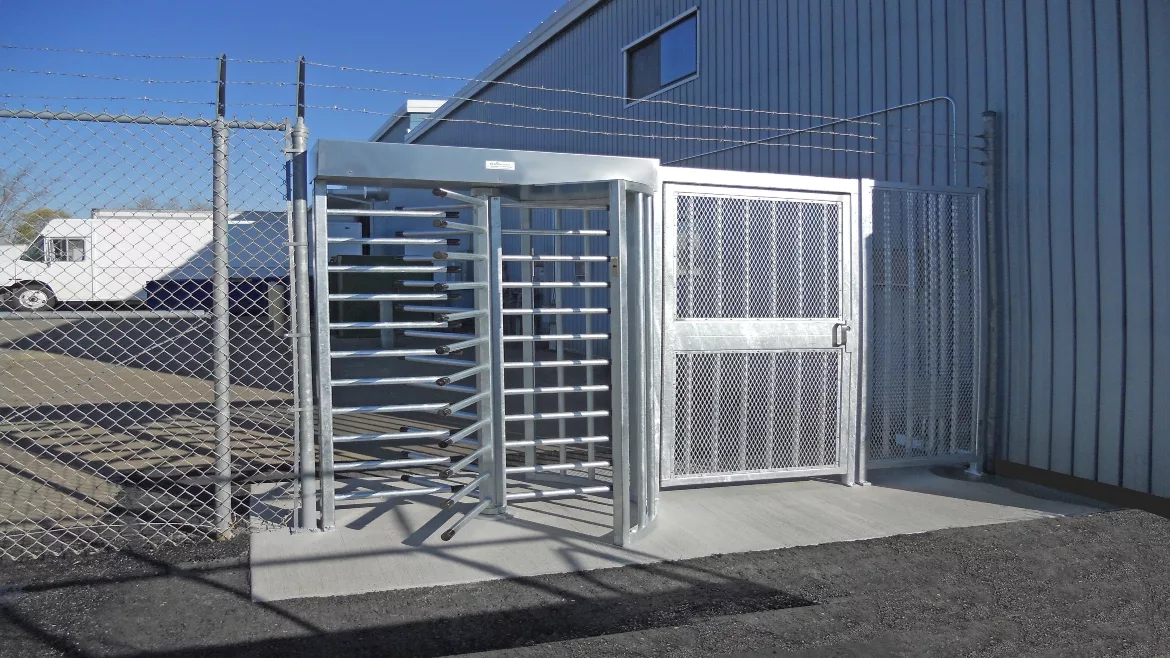Risk mitigation tactics for modern distribution centers

Image courtesy of Boon Edam
Organizations of all types face an increasing number of risks ranging from worker safety to loss prevention, liability, business continuity, and more. However, distribution centers may be one of, if not the only, type of organization that faces all of these risks at a large scale. Add to these challenges the need for 24/7 operations and a high employee turnover, and the need for a multi-layered security approach becomes glaringly evident.
Distribution Centers Require a Different Approach
The very nature of distribution centers invites the obvious industry-wide risks of theft and workplace violence. Only here can you find low wages alongside vast high-value items. This environment creates temptation where the mindset of “they won’t miss just one…” quickly devolves into a larger culture of acceptable loss. It is also here where outsider and insider threats have the same potential to do real damage, often working together to pull off larger crimes.
The security solution applied to address such issues must therefore do many things at once:
- Screen for weapons.
- Thwart theft attempts.
- Prevent unauthorized individuals from entering the premises.
- Maintain fast throughput.
- Comply with regulatory standards and more.
Leveraging Security Entrances and Access Control
There are many schools of thought when it comes to risk reduction at distribution centers; however, most security professionals would agree that violence and loss prevention begins and ends at the door. Both security entrances (i.e., turnstiles, revolving doors, mantraps) and access control solutions installed at a facility’s entry and exit points can immediately deter, identify, and prevent threats. Furthermore, these solutions combined can achieve more together than they could individually. The following outlines examples of how security entrances and access control systems work together to reduce risk for today’s distribution centers.
- At the Perimeter: Since higher security practices exist inside the building, the goal at the fence line is to primarily deter and potentially respond if an incident occurs. If there is parking for employees outside the fence line, full-height turnstiles equipped with an access control reader can be placed along the fence line so that employees can use their credentials to unlock the turnstile and enter one at a time into the secure area.
- At the Inbound Screening Area: Upon arrival on-site and after divesting personal items into lockers, employees approach a manned booth or window to pass any allowed metal belongings into a bowl to a guard who will give them to the employee on the secure side. To enter the secure side, employees present their credentials to an integrated access control system and walk through a metal detector doorway into a full-height turnstile. The turnstile unlocks once the credentials are validated; however, it will relock if the metal detector senses a metal object. In that case, the user must back up, remove the object and try again.
- At the Outbound Screening Area: At the end of a shift, employees must approach an array of two waist-high turnstiles: one turnstile leads to an exit and the other to a search/pat down area with a guard. The employee is randomly selected to either continue on or to proceed through to get a pat down or scan with a wand, thus deterring and preventing any theft simultaneously. All exiting employees, whether patted down or not, then must proceed through a final full-height turnstile to exit the floor. The turnstile is configured as a one-way turnstile to prevent “backflow” into the secure area and enable the integrated access control system to track who has left the secure area for the day.
Integrating Biometrics for Added Security
As outlined above, integrating security entrances with access control is essential for distribution center risk mitigation, but these security measures can be taken one step further with the integration of facial authentication technology. When facial authentication is used in place or in conjunction with a physical credential (ID badge, key fob, etc.), there is a higher level of security offered since access is guaranteed to only the person who matches the credential(s) being presented. With facial authentication, credentials cannot be lost, stolen, or shared, adding another layer of risk reduction.
Throughout the facial authentication process, personal privacies are always kept intact. This method of biometrics uses an algorithm to filter a human face from a video or photograph. Within milliseconds, the face’s characteristics are recorded and converted into a unique code. After this code-matching process, facial recognition software compares the code to a database. If it finds a match, this can be used to identify the individual in the image and determine whether to allow access. No images of faces are ever stored for the ultimate in security and privacy.
A Winning Trifecta
Just as access control systems cannot identify weapons and facial recognition cannot prevent piggybacking, security entrances alone cannot put a stop to theft or workplace violence. Rather, it is the smart combination of all three of these solutions that offer distribution centers an effective, layered approach to security.
Looking for a reprint of this article?
From high-res PDFs to custom plaques, order your copy today!








